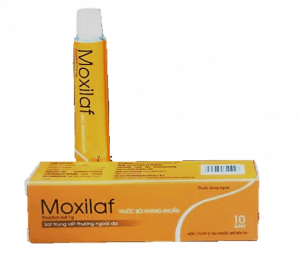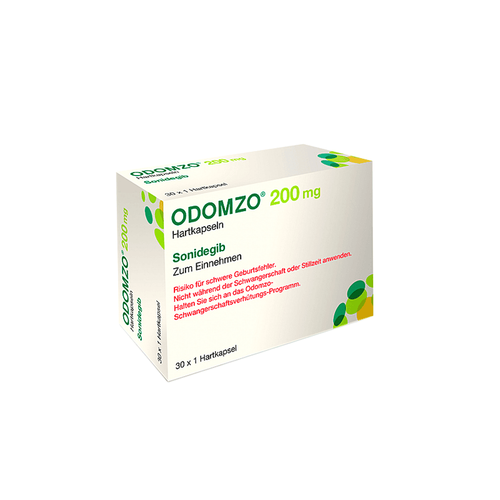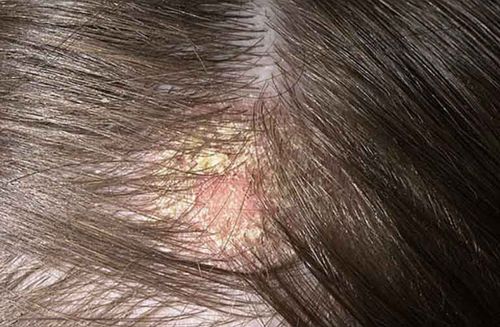This is an automatically translated article.
Science is discovering new ways to attack cancer cells in different regions. Since 2011, the US Food and Drug Administration (FDA) has approved 5 drugs to treat melanoma and other skin cancers, giving patients more options to meet their needs. their specific treatment. Today, patients get better treatment and live longer.1. Skin cancer
Skin cancer is an abnormal growth of skin cells. It usually grows in areas exposed to the sun, but it can also form in places that are not normally exposed to the sun.Two main types of skin cancer are identified by the cells involved:
Keratin cell carcinoma: There are two types of skin cancer, basal cell and squamous cell. These are the most common forms of skin cancer. They are more likely to develop on areas of the body that get the most sun exposure like your head and neck. Basal cell carcinoma: As the most common form of skin cancer, basal cell carcinoma accounts for 90% of all skin cancer cases. They are slow-growing masses that usually appear on the head or neck. Squamous cell carcinoma: This type of skin cancer develops in the outer layers of the skin and it is usually more dangerous than basal cell carcinoma. It can appear as red, scaly lesions on your skin. They are less contagious and life-threatening than other forms of skin cancer, but if left untreated, they can grow larger and spread to other parts of your body.
Melanoma : The second type of skin cancer is melanoma. This type of cancer develops from the cells that give your skin its color, called melanocytes. Benign moles formed by melanocytes can become cancerous. They can develop anywhere on your body. In men, these moles are more likely to develop on the chest and back. In women, these moles are more likely to develop on the legs. Most of these malignancies can be cured if they are identified and treated early. If left untreated, they can spread to other parts of the body and be more difficult to treat. Melanoma is more likely to spread than basal cell and squamous cell skin cancers. This type of skin cancer is less common but is the deadliest type of skin cancer. In fact, melanoma accounts for only 1% of skin cancer cases, yet it causes the majority of skin cancer-related deaths each year.
In addition to the two main types mentioned above, there are a number of other skin lesions that are considered part of skin cancer. Although not all of these conditions are skin cancers, they can become cancerous.
Activated keratosis: These red or pink patches of skin are not cancerous but they are considered a precancerous form. If left untreated, these lesions can develop into squamous cell carcinoma.

Hiện nay, bệnh nhân ung thư da được điều trị tốt hơn và sống lâu hơn.
2. Rates of skin cancer are increasing
In the United States, rates of skin cancer are rising. Cancer starts in the cells. As normal cells age or become damaged, they usually die and new cells take their place. With cancer, new cells grow when they are not needed and old or damaged cells do not die, which forms a large mass of tissue (tumor). Skin cancer can invade normal tissue and spread throughout the body.Treatments to eliminate or destroy the disease completely depend on the type and stage of the cancer. Before 2011, there were only five drugs approved by the FDA to treat melanoma. Most standard chemotherapy drugs help shrink tumors but are effective in less than 15% of patients, said Patricia Keegan, an FDA oncologist. Most people who take those drugs don't get much benefit from them.
Since 2011, the FDA has approved two melanoma drugs and one combination drug — Zelboraf (vemurafenib), Tafinlar (dabrafenib), and Mekinist (trametinib) in combination with Tafinlar — in studies clinical studies, have shrunk tumors in about half of the patients. As for Zelboraf and another new melanoma drug, Yervoy (ipilimumab), patients on the drug lived longer than they did with traditional chemotherapy.
3. New hope for skin cancer patients
Yervoy is a new type of immunotherapy approved to treat patients with melanoma that cannot be removed with surgery and is not limited to melanoma with certain gene mutations. It blocks the cytotoxic T-lymphocyte antigen (CTLA-4) molecule and helps the body's immune system to recognize, target, and attack cells in melanoma. In fact, scientists have been trying to exploit this possibility for over 100 years.The truth is that Yervoy doesn't actually attack tumors. Instead, it helps the body's white blood cells recognize tumor cells as foreign and eliminate them. Zelboraf, Tafinlar, and Mekinist are personalized drugs (customized healthcare at the molecular level), used to treat melanoma patients whose tumors carry the BRAF V600E gene mutation. They stop tumors from growing by blocking the BRAF gene from being mutated.
4. What drives advances in skin cancer treatment?
Science is targeting the abnormal gene mutations of cancer cells that cause tumors to grow uncontrollably and creating drugs that stop them. This doesn't always work because tumors often find another door when you close one of their pathways. So scientists are working on multiple therapies that work together to block different pathways of tumors.Fighting the growth of cancer is like building a dam to control water flowing down a residential area. Cancer cells are like water that will find another way to go. That's why we need several cancer control measures used in combination to stop cells from multiplying and spreading.
Such was the case with the FDA-approved combination drug therapy in January 2014. Mekinist and Tafinlar jointly treat patients with advanced stage melanoma that has spread or cannot be surgically removed. These drugs block signaling at different sites of the same molecular pathways that promote cancer cell growth.

Các nhà khoa học đang nghiên cứu nhiều liệu pháp phối hợp để điều trị ung thư da.
5. Another breakthrough in skin cancer treatment
The FDA also approved the first drug to treat metastatic basal cell carcinoma: Erivedge (vismodegib). For a small portion of the population, this cancer is very serious. Doctors often cannot remove some of these tumors, possibly because they are located on the face, head, nose, or eyelids, and patients often have disfiguring lesions.People with Gorlin syndrome, which is a rare form of skin cancer that can involve many parts of the body. In particular, patients are vulnerable because their cancer often recurs or metastasizes.
Erivedge can shrink their tumors and allow them to control their lesions for months. The drug is only effective for 30% to 40% of patients but for them it is a breakthrough because they have run out of options.
Skin cancer patients should be diagnosed early to have timely treatment to increase the possibility of recovery. A skin biopsy is one of the methods used to diagnose skin cancer. At Vinmec International General Hospital, the skin biopsy technique is currently being applied in a sterile environment. The doctor performing the procedure is experienced and highly qualified, professional medical examination and treatment services.
If you want to learn more information about skin biopsy technique at Vinmec International General Hospital, you can contact Vinmec Health System nationwide, or register online HERE
Please dial HOTLINE for more information or register for an appointment HERE. Download MyVinmec app to make appointments faster and to manage your bookings easily.
References: fda.gov, healthline.com












